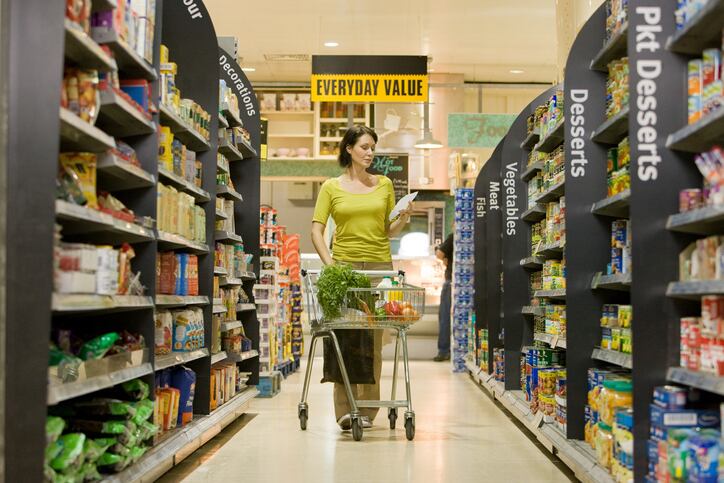April marked the second month of single-digit food and beverage inflation after many months of double-digit increases, but even with prices climbing “only” 8.2% year-over-year last month, the real feel is no doubt higher as prices are up a whopping 23.1% from 2020 – prompting many Americans to embrace money-saving strategies when it comes to eating, Anne-Marie Roerink, president of 210 Analytics reports.
She noted that consumers continue to prepare the bulk of their meals (80%) at home with 22% planning to source fewer restaurant meals and 19% planning to cook more meals from scratch to help save money. Likewise, 85% are employing other money-saving strategies, including 53% who are looking for sales and promotions, 46% who are cutting back on non-essentials and 34% who are buying more private label produces.
“Consumers are also changing behaviors inside the home,” Roerink said, pointing to data from a Circana survey that found 40% of consumers are more conscious about using fresh food before it goes bad, 39% using leftovers more and 25% using more “simple ingredients.” An additional 16% say they are buying frozen foods to “use as much as needed for a meal,” she reported.
Price drops allow for volume increases but not always within the same segment
The slowdown in prices per unit across all foods and beverages from 13.5% in the last quarter of 2022 and 11.4% in the first quarter of 2023 to 8.2% in April has had an uneven impact across store and within store segments – directly influencing purchases.
For example, the year-over-year price per volume in April fell 0.1% in fresh produce, 0.8% in fresh seafood, and 2% in frozen seafood, but rose 10.1% in total dairy, 7.4% in deli and 11.2% in bakery. Prices per unit also rose 1.3% in total meat (including 8.1% in processed meat), 10.5% in frozen food (including 25% in frozen fruits and vegetables), 1% for refrigerated meat alternatives, Roerink reported.
But the ups and downs in the individual categories did not necessarily correlate with similar volume adjustments. Rather, some were contradictory – suggesting savings from some segments were potentially applied in others.
For example, even though the average price for dairy increased 10.1% in April over the prior year, the year-over-year volume of natural cheese purchased inched up 0.9% while cottage cheese and cheese snack kits saw strong gains of 6.5% and 11.1% respectively.
The price drop in produce, however, aligned with an increased demand for fresh fruit with units climbing 1.9% in April vs a year ago. The same can’t be said for fresh vegetables, which fell 1.1% from a year ago.
In seafood, year-over-year price drops of 14% for fresh crab and 17% for fresh lobster in April made space for higher volumes – up 29.7% for crab and 9.1% for lobster in the same period.
Roerink reported a similar correlation between deflation and increased demand for grind meats, as well.
While many consumers are looking to rein in spending by pulling back on volume where prices are higher, one exception is in deli-prepared where the trade off of convenience helped reinforce sales so that units dropped “a mere 1.0%,” Roerink said.


